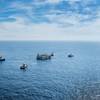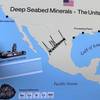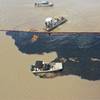Military Sealift Command dry cargo/ammunition ship USNS Lewis and Clark and its crew of 124 civil service mariners and 11 Sailors returned to Naval Station Norfolk, completing a six-month deployment to the U.S. Central Command area of operations. This was the first operational deployment of a ship from the Navy’s newest class of combat logistics force ships – the T-AKE.
During the deployment, Lewis and Clark completed 73 underway replenishments and 28 in-port replenishments, delivering 5,856 pallets of food and supplies and transferring nearly 15 million gallons of fuel to U.S. and coalition warships operating in support of operations Enduring Freedom and Iraqi Freedom.
Specifically, Lewis and Clark supported USS Enterprise and USS Harry S. Truman carrier strike groups and USS Bonhomme Richard, USS Wasp and USS Kearsarge expeditionary strike groups. Lewis and Clark also resupplied coalition naval forces from Pakistan, Germany, France, Australia and the United Kingdom.
The T-AKE replaces aging, single-mission ships such as T-AE ammunition ships and T-AFS combat stores ships that are, on average, 40 years old and near the end of their service lives.
Lewis and Clark was delivered to MSC June 20, 2006. The 689-foot ship is the first of a projected class of 14 T-AKEs, the first 11 of which will serve as combat logistics force ships delivering ammunition, provisions, stores, spare parts, potable water and petroleum products to U.S. and coalition warships at sea. The remaining three T-AKEs are slated to be part of MSC’s Maritime Prepositioning Force (Future), which will strategically position U.S. Marine Corps supplies at sea.
Lewis and Clark was replaced in-theater by dry cargo/ammunition ship USNS Sacagawea – the second ship of the class.









